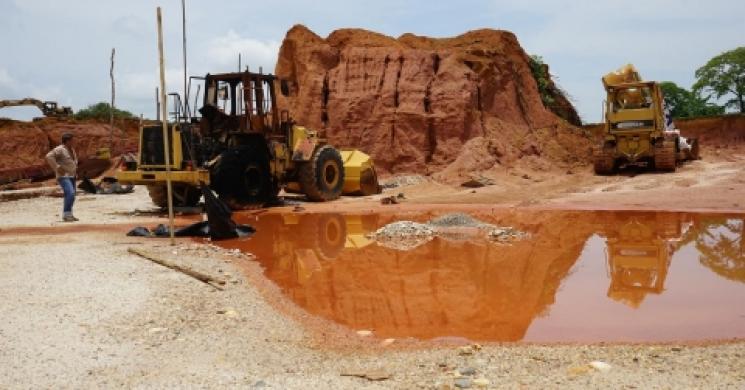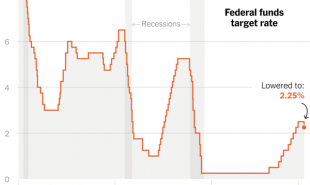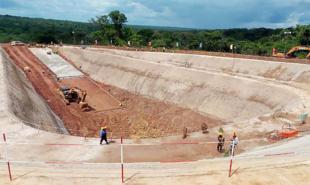
Blood gold: From conflict zones in Colombia to jewelry stores in the US
The trial of Colombian exporter Goldex for money laundering reveals how dirty gold reaches two American companies
Artisanal miners, most of them Afro-descendant Colombians, have worked the land since the 17th century, using the same small-scale practices of their ancestors. Many have been killed, displaced and disappeared for resisting large mining interests from taking their land.
Michael Norby
In the department of Cauca in southern Colombia, newly constructed huts and fresh tracks made by heavy machinery indicate an old, abandoned mine is seeing new life. As many as 30 workers were killed here in a landslide in the summer of 2014 and most of their bodies still lie under tons of fallen rock and mud. Now, mining operations are about to begin again.
“The machines came in at night a few days ago,” says a community leader from Santander de Quilichao, the municipality where the mine is located. He did not wish to be named, as he has received multiple death threats because of his activism around mining. The machines are brought in secretly so the locals “can’t mobilize and try to stop them,” he adds.
That’s not the only sign that the reopening of the mine is a furtive affair. Armed men posted at the entrance quickly turn strangers away, but one sentry insists that everything is “totally normal and peaceful.” The machete he brandishes undermines his message of calm. “There are no armed groups here. This is all artisanal mining in this area, but you have to go now.”
It is a lie that no one is expected to believe. Small-scale gold miners have worked here for centuries. They say they are being forced outat gunpoint to make way for criminal mining operations loosely connected to paramilitary groups, drug traffickers and leftist guerrillas. These armed groups forcibly take over territory from traditional miners. Those who attempt to resist are left with a brutal choice: displacement or death.
“When they are following you or threatening you, you know that they could kill you at any time,” says Francia Márquez, a traditional miner and leading voice against the criminal mining invasion, who fled the region earlier this year after an attempt on her life by masked gunmen.
Colombian security forces have launched several raids against illegal mining operations in recent months. In Caucasia, Antioquia, a miner surveys machinery destroyed by army explosives during a nighttime assault.
Michael Norby
The people of Cauca are no strangers to suffering. For over half a century, they have been witness to horrific levels of violence between Marxist guerrillas and the Colombian military. The arrival of right-wing paramilitary counterinsurgents in the late 1990s took terror to new levels: So many dismembered bodies were thrown into the River Cauca it was nicknamed “The Cemetery.”
But the current conflict is different. The political war between leftist revolutionaries and the state and its paramilitary proxies is not about ideals but money — it has become a multibillion-dollar business.
“The war here is for our gold, says the Santander de Quilichao community leader. “That is their target, and it has impacted us in a very cruel way.”
Illegal mining brings in approximately $2.5 billion a year and has now eclipsed cocaine trafficking as the main driver of violence and a source of dirty money in Colombia, according to President Juan Manuel Santos. But while cocaine travels clandestine routes from supplier to consumer, illegal gold travels with legal documents via airfreight.
Until recently, Colombian authorities had barely investigated the commercial alchemy used to turn illegal gold into legal pesos, but now prosecutors are bringing their first major case of money laundering to trial. Goldex, once the country’s second largest gold exporter, stands accused of laundering hundreds of millions in criminal profits and exporting illegal gold from conflict zones in Colombia to the United States, most of it to two American companies: Republic Metals Corp. and Metalor Technologies USA.
The bonanza
Much of the illegally mined gold uncovered in the Goldex case has been traced back to the mountainous region of Bajo Cauca, in the northern department of Antioquia, which was an epicenter of violence during the Colombian civil war. But in recent years, the six Antioquian municipalities that make up Bajo Cauca have even greater levels of terror as the front line of the nation’s gold wars.
In the town of Caucasia, in western Bajo Cauca, it is always the grenades that people remember first. They fling their hands around as they mime the explosions that used to punctuate daily life during a war that raged here from 2009 to 2013.
The killing was carried out by former paramilitaries from the right-wing death squad United Self-Defense Forces of Colombia, or AUC. In the 1990s and early 2000s, the AUC waged a brutal counterinsurgency campaign against leftist guerrillas, including the Revolutionary Armed Forces of Colombia, or FARC. The oldest, largest guerrilla group in the country, the FARC has been fighting what it says is a corrupt and exploitative state since 1964 in a war in which more than 220,000 people have been killed.
The AUC succeeded in displacing the larger, more powerful FARC and the smaller, leftist guerilla group the National Liberation Army to the rural edges of Bajo Cauca. But after the AUC demobilized in 2006, its paramilitaries joined two new criminal armies, the Urabeños and the Rastrojos, and former comrades turned on each other in a battle for control of the region.
You never know who you are involved with, but you know never to ask.
65-year-old miner from Caucasia
who saw miners displaced and disappeared
The immediate trigger for the war was a dispute over cocaine processing laboratories and drug trafficking routes. But the start of the fighting coincided with soaring international gold prices, which sparked an illegal mining boom, making control of gold an extremely lucrative prize.
Bajo Cauca has long had an informal mining sector, but when gold prices nearly doubled from 2008 to 2011, the traditional miners were joined by a flood of migrant workers and investors. Before long, thousands of backhoes and tens of thousands of miners were digging for gold, leaving a muddy wasteland in their wake.
For the region’s armed groups, it was a bonanza. It began with extortion. Some miners were charged a weekly or monthly fee to be allowed to work. For others, it was a charge per backhoe or digger, or a percentage of the gold they had mined. But in one way or another, everyone, from gold panners sifting through the dirt to large-scale mining operations employing hundreds of men, had to pay what is known as the “vaccination.”
When the fighting between the Rastrojos and the Urabeños broke out, miners and gold traders often found themselves trapped in disputed territory and paying both sides. One gold trader, barrel chested and with a furrowed brow, shows the consequences of being caught in the middle; pulling up his shirt, he reveals scars marking the exit and entry points of two bullets and a long streak where a third grazed his torso.
“When they realized we were paying the other group as well, that was a problem,” says the trader, who did not want to be named for fear of reprisal.
A paramilitary-controlled mine near Suarez, Cauca. Illicit gold has become a primary revenue source for armed groups in Colombia.
Michael Norby
As the fighting intensified, armed groups began to play a bigger role in illegal mining. They started to control access to mines, determining who could work, where and when. In their territorial strongholds they went even further, according to local police and prosecutors, investing in machinery that they rented out, sending their own people to work profitable territories or even directly controlling mines.
“You never know who you are involved with, but you know never to ask,” says one 65-year-old miner from Caucasia, who says he saw miners displaced and disappeared during the recent violence.
The worst fighting took place from 2009 to 2013, when the number of murders reached 1,603 — a 962 percent increase compared with the last five years of AUC rule, according to the records of the government forensic science institute, Medicina Legal.
The number of people displaced by violence, meanwhile, rose by 461 percent, to 27,044, according to the figures of the nonprofit organization Consultancy for Human Rights and Displacement. Colombia now has more than 6.1 million internally displaced people — the highest number in the world behind Syria.
The violence began to subside when the Rastrojos abandoned the region, leaving Bajo Cauca in the hands of the Urabeños, whose criminal empire now stretches into 23 of Colombia’s 32 provinces, according to conflict monitoring groups.
[The Urabeños] are the ones who say when you can move, when you can leave, who works where — they control all of this.
Artisanal miner from Cáceres
But the absence of war is not the same as peace. Though commercial and tourism hubs like Bogotá and Cartagena have been largely pacified, in the resource-rich rural parts of the country, Colombians have a lexicon of euphemisms to keep the horrors of battle from everyday talk.
Much of Bajo Cauca is currently “delicado” (delicate) — calm but with the shadow of armed groups looming large. However, some municipalities are one step above: “complicado” (complicated).
An artisanal miner from the municipality of Cáceres travels the hour up the road to Caucasia to talk because in Cáceres the Urabeños informants known as “moscas” (flies) watch every movement and every meeting. In Caceres, it is complicado.
“They have control of the municipality,” he says, referring to the Urabeños. “They are the ones who say when you can move, when you can leave, who works where — they control all of this.”
Inside the world of Goldex
At the height of this terror Goldex was sending hundreds of millions of dollars’ worth of gold to the United States — gold that was violently extracted from Bajo Cauca.
Goldex was founded in 2001 by John Uber Hernández Santa, then 30. A native of Medellín, Hernández had spent his youth selling fruit and fish at the city market. His rags-to-riches story came crashing down in January this year when Colombian prosecutors accused Goldex of exporting criminally mined gold and laundering approximately $800 million in dirty money for armed groups and mafias.
Hernández and his wife fled, but were arrested while hiding out in a hotel. The couple is now on trial in an Antioquian court alongside nearly two dozen others for money laundering, illegal enrichment and criminal conspiracy.
John Uber Hernández Santa, the owner of Goldex, under arrest.
The group has already lost a member; one of the defendants jumped out of an 18th floor window of the Medellín Palace of Justice during a recess in the first hearing. In the small, shabby courtroom where the hearings have been taking place, the remaining defendants make for a motley band, with slick men in suits joined by brash youths in flashy sneakers and even a tiny, gray-haired old woman with reading glasses tucked into her bright pink T-shirt. Some were the financial brains behind the operation, allege the prosecutors, while the rest provided the signatures and ID numbers needed to conceal the fraud.
Which armed factions they were working for remains uncertain, as prosecutors have yet to definitively trace Goldex to any specific underworld groups. Instead, their case rests on showing that Goldex’s accounting was so fantastical there is no other possible explanation than a cover-up for money laundering and illegal gold trading.
At the indictment hearing in January this year, the prosecutor described how Goldex sourced its gold from a network of ephemeral supply companies whose life cycle rarely exceeded three years. The companies financed millions of dollars of gold purchases with just thousands in capital and conducted hundreds of transactions in a single day without having a single contract employee, Goldex company records show. Their offices could be found in the most unexpected locations, such as scrapyards or a family home in a village in the state of La Guajira, where the owner swears there has been no gold trading in the 50 years since her great-grandfather built the house.
Purchase records show that the gold these companies supplied to Goldex was bought from thousands of dead people and people who never existed. Yet more of the precious metal was registered as having come from people who told prosecutors they had never been involved in the gold trade, in some cases because they had been living on the streets for years.
It is not possible to come to any conclusion except that all of the gold and all of this income they were trying to justify was of illegal origins.
Luz Angela Bahamon
lead prosecutor in the Goldex trial
But it wasn’t just the supply companies. Goldex’s own books were also works of fiction, the prosecutors say. Millions of dollars disappeared into mismatched accounts and phantom transactions.
“It is not possible to come to any conclusion except that all of the gold and all of this income they were trying to justify was of illegal origins and came from illegal organizations that needed to create a structure to launder their profits,” said lead prosecutor Luz Angela Bahamon at the indictment hearing.
In the final six years of its operations — during the height of the violence in Bajo Cauca — the now-defunct Goldex exported over 47 tons of gold, worth more than $1.4 billion, according to the records of Colombia’s National Tax and Customs Directorate (DIAN). The DIAN’s export declarations show that more than 97 percent of this gold went to Republic Metals Corp., or RMC, in Miami and Metalor Technologies USA in North Attleboro, Massachusetts, a subsidiary of the Swiss business group Metalor Technologies SA.
But according to both companies’ supply chain policies they should not have been doing business with Goldex at all. Their own internal guidelines prohibit RMC and Metalor from dealing with suppliers when there is a reasonable risk they are sourcing gold from parties that provide direct or indirect support to nonstate armed actors that control or extort mines or traders. Their policies also include commitments to take action when there is a reasonable risk the supply chain is being used to launder money.
However, both Republic and Metalor continued to buy from Goldex even after one of its suppliers, Jairo Rendon Herrera, who is the brother of the founder of the Urabeños, and had alleged ties to the AUC, surrendered to U.S. authorities to stand trial for drug trafficking in 2009. RMC continued to buy from Goldex even after it was contacted by Colombian tax authorities who asked about two transactions in which Goldex reported receiving nearly $200,000 more from RMC than the $5.7 million it actually received — a classic money laundering technique, say prosecutors. Even after Goldex was sanctioned over those irregularities in 2012, the exports continued.
In the case of Metalor, the transactions continued for at least eight months after Colombian prosecutors said publicly in August 2013 that they suspected the company of money laundering.

Aerial view of an illegal mining area on the banks of the Cauca river, in the rural area of Santander de Quilichao, Colombia, in February 2015.
Luis Robayo / AFP / Getty Images
In a written response to an interview request, Erik Connolly, a lawyer representing RMC, said independent audits of the company show it has met its commitments to source gold responsibly. He pointed out that the company terminated its relationship with Goldex shortly after media reports about the prosecutor’s investigation emerged.
“All sources of precious metals at RMC come from legitimate, conflict free and ethical sources,” he said. However, Connolly declined to answer questions on the company’s supply chain monitoring and why it failed to act. He also declined to comment on RMC’s suppliers sourcing gold from regions where armed groups exploit mining.
Nick Speciale, Metalor USA’s anti-money laundering director of security and its compliance officer, declined to comment on the Goldex case or on any of Metalor’s business dealings in Colombia.
If Republic and Metalor failed to quickly sever ties with Goldex, they were certainly concerned about the company’s actions. An official in Colombia’s prosecutor’s office, speaking on condition of anonymity, says both companies contacted the office about the case after press reports revealed Goldex was under investigation — but the companies have not talked to them since. Colombian prosecutors also met, informally, with U.S. customs authorities and the Drug Enforcement Administration to see if those agencies had information that could help the investigation, the source adds.
Colombian prosecutors would like to see U.S. authorities and companies importing gold take much more responsibility for their role in the illegal gold supply chain, the official says. “There is silence [from the U.S.], but there is a responsibility there to go further, and we haven’t seen that.”
Much of the gold imported by RMC and Metalor is used in everyday consumer goods in the United States and around the world, from cell phones and computers to medical equipment and jewelry.
According to Ariel Avila, a researcher from the Colombian think tank Peace and Reconciliation Foundation, the Goldex case is going to spark more debate and more stringent regulations. “North American companies that buy gold are going to have to be able to properly establish the origins of that gold,” he says.
The stink of corruption
While the Goldex case winds its way through Colombia’s criminal justice system in Antioquia, back in Cauca tensions are rising because of a new investigation by prosecutors into the latest suspect gold exporter, a company called Giraldo y Duque.
Suspicions about Giraldo y Duque were first raised by Sen. Ivan Cepeda, renowned for investigating the seedy underbelly of business and politics in Colombia. In February, Cepeda sent a letter to the prosecutor’s office calling for an investigation into the company’s operations. The letter highlighted Giraldo y Duque’s 532 percent growth in exports from 2008 to 2012 and its relationships with suspicious suppliers, which he compared to Goldex.
Over the period mentioned by Cepeda, Giraldo y Duque’s biggest customers were familiar names: Republic Metals Corp. and Metalor Technologies USA. In 2013, the company began operating from a free-trade zone in the town of Palmira in western Colombia. The export records for the tax-free gold shipments are not publicly available and the zone’s administration officers did not respond to requests for access. RMC denies it continues to receive gold from the company but refused to comment further.
Cepeda’s allegations about Giraldo y Duque, however, were not just financial. His letter to prosecutors also repeated the accusations of a Cauca community council, which said that company owner Alexander Duque was often seen traveling the region in the company of a mysterious drug trafficker known only as “El Mexicano,” who has several mines in the region and a private army to guard them.

The entrance to a 930 ft deep mine in Antioquia.
James Bargent
Cauca residents say Alexander Duque’s relationships with local authorities stink of corruption. In the village of La Esperanza high up in the Cauca mountains, Mayor Elias Larrahondo Carabali admits having a decade-long social relationship with company heads but angrily dismisses accusations that he was aware of any misconduct. “I have absolutely no knowledge of the kind of activities they are involved in,” he says. “How could I?”
But when asked if he will cooperate with the investigation into Giraldo y Duque, the mayor shrugs. “It depends on how they approach me,” he says. “There has been no formal accusation to us about what you’re saying.”
Larrahondo is more forthcoming on what he believes is the solution to Cauca’s problems: peace with the FARC, which is heavily involved in illegal mining. Peace — of a sort — isn’t too far off. For the past three years, the rebels and the government have been holding peace talks in Havana, and in late September, the two sides reached a breakthrough agreement.
Like the mayor, most people in Cauca say they will welcome an agreement. They know there is only one alternative to negotiations: more war. But they are doubtful that they will see true peace, just violence with a different face. They fear that the demobilization of the FARC will trigger another resource war for gold and drugs like the one in Bajo Cauca after the AUC disbanded. And it is a fear that is well-founded, says Cepeda, the senator, especially in Cauca, where there are powerful interests with a stake in mining.
“I am completely convinced that Colombia is not going to have a tranquil transition to peace,” he says. “If there is an agreement, it will be about taking apart these territories.”
Read more by Soren K.Group







